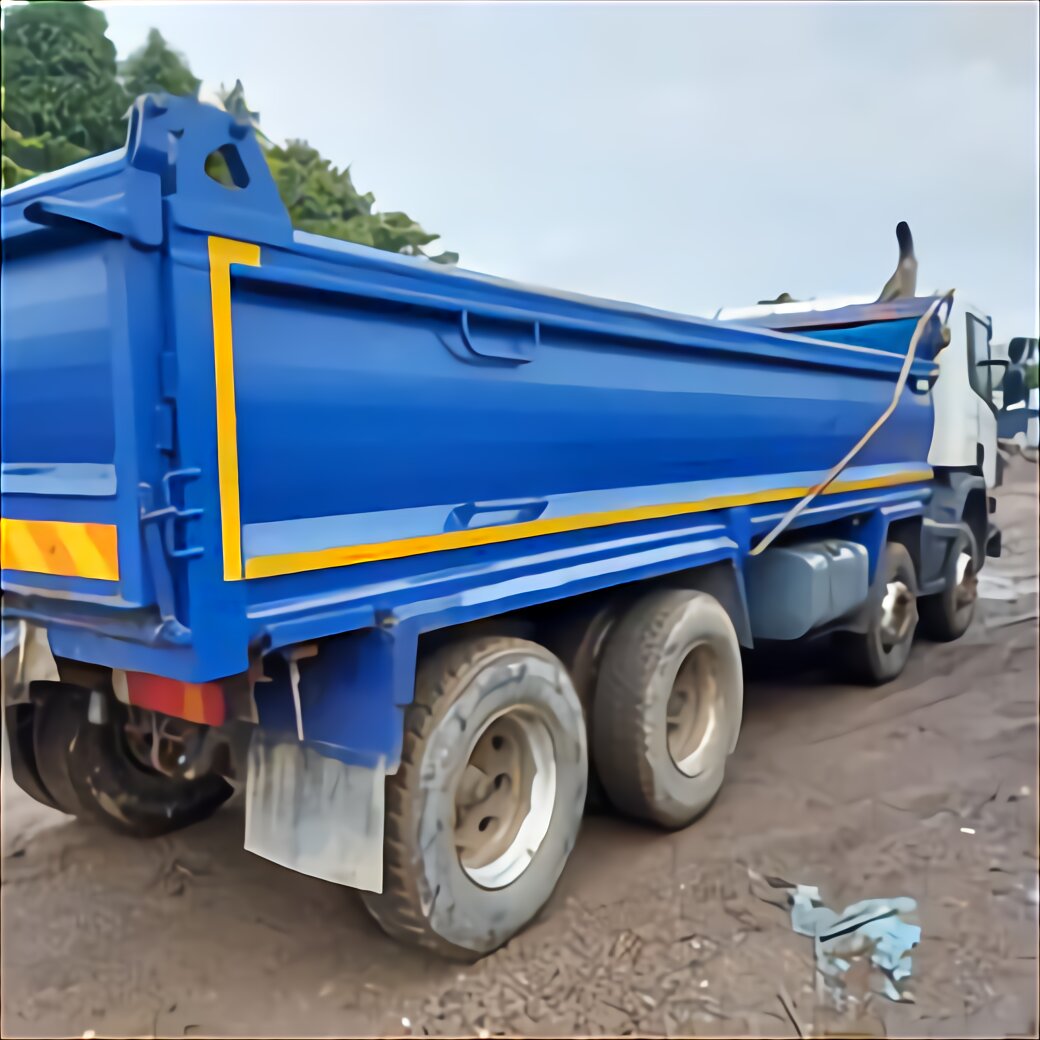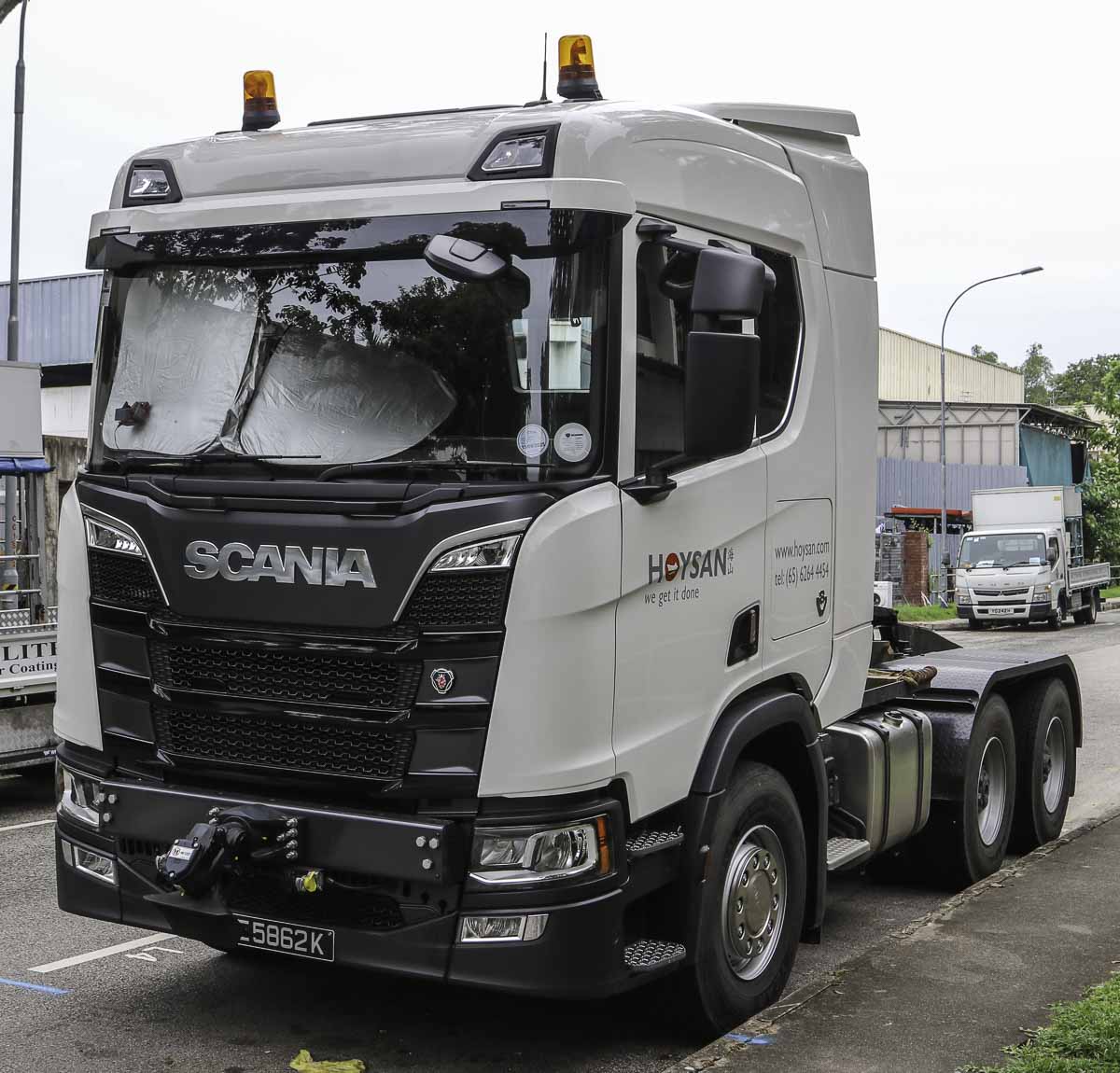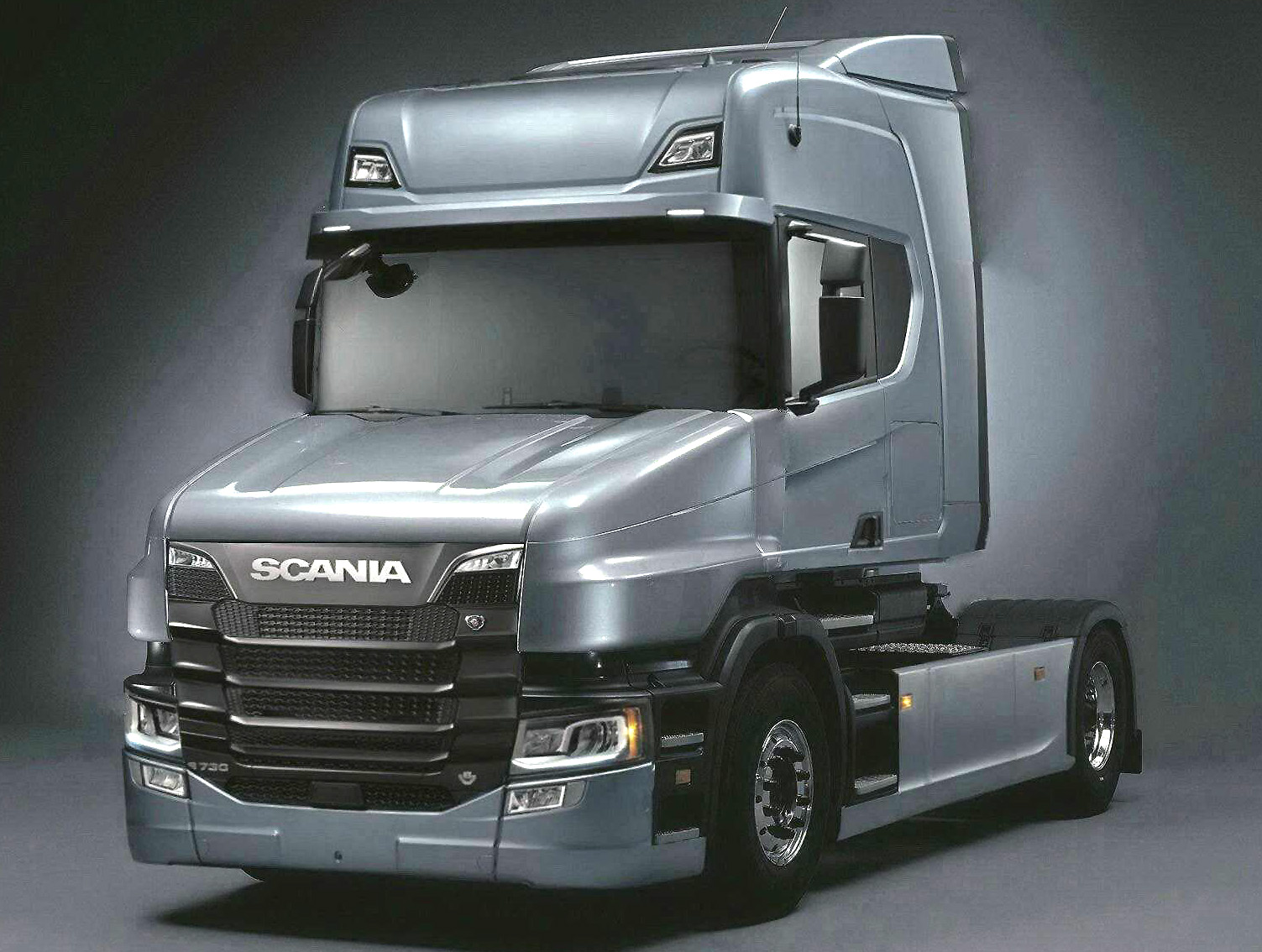Scania Trucks For Sale: A Comprehensive Buyer’s Guide types.truckstrend.com
In the competitive world of commercial transportation, the choice of a truck is paramount. It’s not just a vehicle; it’s a vital asset that dictates operational efficiency, driver satisfaction, and ultimately, a business’s profitability. Among the titans of the trucking industry, Scania stands out as a brand synonymous with reliability, innovation, and a commitment to sustainable transport solutions. For anyone contemplating an investment in heavy-duty vehicles, exploring "Scania Trucks For Sale" opens a gateway to a fleet renowned for its robust performance, fuel efficiency, and unparalleled driver comfort.
This comprehensive guide aims to demystify the process of acquiring a Scania truck, whether new or used. We’ll delve into what makes Scania a preferred choice, explore the diverse range of models available, offer a step-by-step purchasing guide, and provide practical advice to ensure your investment is sound and strategic.
Scania Trucks For Sale: A Comprehensive Buyer’s Guide
The Unmatched Appeal of Scania Trucks
Why do so many transport operators and owner-drivers gravitate towards Scania? The reasons are multifaceted, rooted in decades of Swedish engineering excellence and a forward-thinking approach to trucking.
- Durability and Reliability: Scania trucks are built to withstand the toughest conditions and demanding schedules. Their modular system design ensures components are robust and easily serviceable, leading to high uptime and lower long-term maintenance costs. This inherent durability translates into a longer operational life and higher resale value.
- Fuel Efficiency: In an industry where fuel costs are a major expenditure, Scania’s commitment to efficiency is a significant advantage. Their advanced powertrains, including the acclaimed Opticruise automated gear-changing system, sophisticated engine management systems, and aerodynamic cab designs, are engineered to minimize fuel consumption without compromising performance.
- Driver Comfort and Safety: Scania places the driver at the heart of its design philosophy. Cabs are spacious, ergonomically designed, and equipped with features that reduce fatigue and enhance productivity. Advanced Driver-Assistance Systems (ADAS) and robust passive safety features ensure a secure working environment, protecting both the driver and the cargo.
- Technology and Innovation: Scania is at the forefront of transport technology. From advanced connectivity services that optimize fleet management and predictive maintenance to pioneering work in alternative fuels (such as LNG, CNG, HVO, and even electric powertrains), Scania trucks are equipped for the future of transport.
- Strong Resale Value: Thanks to their reputation for quality and longevity, Scania trucks generally retain a strong resale value, making them a wise investment whether you plan to operate them for years or eventually upgrade.

Navigating the Market: New vs. Used Scania Trucks
The journey to acquiring a Scania truck often begins with a fundamental decision: new or used? Each option presents distinct advantages and considerations.
New Scania Trucks
Purchasing a new Scania truck offers the pinnacle of modern trucking.

- Advantages: You get the latest technology, full factory warranty, complete customization options (from powertrain to cab interior and specialized bodywork), and the peace of mind that comes with being the first owner. New trucks often come with attractive financing packages directly from Scania Finance.
- Considerations: The primary drawback is the higher initial capital outlay and immediate depreciation upon driving off the lot.
- Where to Buy: Exclusively through authorized Scania dealerships. These dealerships offer comprehensive support, including financing, service plans, and genuine parts.

Used Scania Trucks
For many businesses and owner-operators, a used Scania truck represents an excellent balance of quality and cost-effectiveness.
- Advantages: Significantly lower purchase price, immediate availability, and often, the opportunity to acquire a well-maintained vehicle with many years of productive life remaining. The initial depreciation has already been absorbed by the previous owner.
- Considerations: Potential for higher maintenance costs if not thoroughly inspected, limited or no warranty, and the challenge of verifying a truck’s history.
- Where to Buy:
- Authorized Scania Used Truck Centres: Many Scania dealerships also have certified used truck programs, offering inspected and warrantied used vehicles. This is often the safest route.
- Independent Used Truck Dealers: A vast market of dealers specializes in used commercial vehicles. Research their reputation thoroughly.
- Online Marketplaces: Platforms like TruckScout24, Mascus, eBay Motors, and local classifieds are popular for finding a wide range of used Scania trucks. Be cautious and verify sellers.
- Auctions: Can offer competitive prices but require quick decision-making and often don’t allow for thorough pre-purchase inspections.
- Private Sellers: Potentially the lowest prices, but highest risk due to lack of guarantees and often incomplete documentation.
Understanding Scania Truck Series and Their Applications
Scania offers a modular range of trucks, allowing for highly customized configurations tailored to specific applications. Understanding the main series can help narrow down your search.
- P-series: Characterized by a low cab, easy entry, and excellent visibility, the P-series is ideal for urban and regional distribution, construction (e.g., tippers, concrete mixers), and municipal services (e.g., refuse collection). It’s designed for frequent stops and starts, where maneuverability and accessibility are key.
- G-series: A versatile all-rounder, the G-series offers a balance of cab space, comfort, and payload capacity. It’s suitable for a wide range of applications, including regional and national long-haul, construction, and specialized transport. It provides a comfortable working environment for drivers without the full scale of the larger R/S cabs.
- R-series: The R-series is Scania’s premium offering for long-haul transport and heavy-duty applications. Known for its spacious and comfortable sleeper cabs, powerful engines, and high levels of equipment, it’s designed for drivers spending extended periods on the road. Excellent for international transport and heavy haulage.
- S-series: Representing the pinnacle of Scania’s long-haul range, the S-series features a flat floor for maximum interior space and an even higher level of comfort and luxury. It’s built for those who prioritize the ultimate driving and living experience on long journeys, often paired with the most powerful V8 engines.
- XT Range: Specifically designed for demanding conditions found in construction, mining, and forestry, the XT range (available across P, G, R, and S series) features reinforced components, higher ground clearance, and robust bumpers to withstand harsh environments.
- Specialized Builds: Beyond the series, Scania trucks are frequently configured for highly specialized tasks, including:
- Tractor Units: For pulling various types of trailers (curtain-siders, reefers, tankers, flatbeds).
- Rigid Trucks: Chassis configured with fixed bodies like tippers, concrete mixers, refuse compactors, hook loaders, fire trucks, and various box bodies for distribution.
- Heavy Haulage: Multi-axle configurations and high-power engines for transporting abnormal loads.
A Step-by-Step Guide to Buying Your Scania Truck
Purchasing a Scania truck is a significant investment. Follow these steps to ensure a smooth and successful acquisition:
1. Define Your Needs & Budget:
- Application: What will the truck be used for? (Long-haul, distribution, construction, etc.)
- Payload & Axle Configuration: What weight will it carry? How many axles are required? (e.g., 4×2, 6×2, 6×4, 8×4).
- Engine Power & Fuel Type: What horsepower is needed? Diesel, LNG/CNG, HVO, or electric?
- Cab Type: Day cab, sleeper cab, crew cab?
- New vs. Used: Decide based on budget, urgency, and desired features.
- Budget: Establish a clear budget, including not just the purchase price but also potential financing costs, insurance, and initial maintenance.
2. Research & Selection:
- Based on your needs, research specific Scania models and configurations.
- Compare specifications, features, and available options from various sellers (dealerships, online platforms).
- Read reviews and seek advice from other operators.
3. Inspection & Verification (Crucial for Used Trucks):
- Visual Inspection: Check the chassis for cracks or rust, cab for damage, tires for wear, and bodywork for any signs of major accidents or poor repairs.
- Mechanical Inspection:
- Engine: Look for leaks, listen for unusual noises, check oil and coolant levels and condition.
- Transmission: Test all gears, listen for grinding, check for smooth shifting (especially for Opticruise).
- Brakes & Suspension: Check for wear, proper function.
- Electrics: Test all lights, dashboard functions, air conditioning, and any auxiliary systems.
- Documentation Check:
- Service History: A complete and verifiable service history is invaluable. Look for regular maintenance records.
- VIN Check: Verify the Vehicle Identification Number matches all documents and check for accident history or outstanding finance.
- Registration & Ownership: Ensure the seller is the legal owner and all paperwork is in order.
- Professional Inspection: For used trucks, consider hiring an independent mechanic specializing in heavy vehicles to conduct a pre-purchase inspection. This can uncover hidden issues.
4. Test Drive:
- Always test drive the truck, ideally under conditions similar to its intended use.
- Pay attention to engine performance, braking, steering, transmission shifting, and overall driver comfort.
- Listen for any unusual noises or vibrations.
5. Financing & Insurance:
- Explore financing options. Scania Finance offers tailored solutions. Banks and independent finance companies also provide loans and leases.
- Obtain insurance quotes. Commercial truck insurance can be a significant ongoing cost.
6. Negotiation & Purchase:
- Be prepared to negotiate the price, especially for used trucks.
- Clarify all terms of the sale, including warranty (if any), delivery, and any included services.
- Ensure all agreements are in writing before signing.
7. After-Sales Support:
- Understand the warranty terms (for new trucks or certified used).
- Inquire about service contracts and parts availability. Scania’s extensive global service network is a major benefit.
Important Considerations and Potential Challenges
- Total Cost of Ownership (TCO): Look beyond the purchase price. Factor in fuel consumption, maintenance, insurance, tires, and depreciation over the truck’s lifespan. Scania’s reputation for fuel efficiency and durability often leads to a lower TCO despite a potentially higher initial cost.
- Emissions Standards: Be aware of regional and national emissions regulations (e.g., Euro 5, Euro 6 in Europe). Ensure the truck complies with standards in your operating area, especially if importing.
- Maintenance & Parts: While Scania parts are widely available through its network, specialized components can be more expensive. Ensure you have access to qualified mechanics.
- Fraud & Misrepresentation: Be extremely cautious with deals that seem too good to be true, especially from private sellers or unverified online sources. Always inspect the vehicle in person.
Tips for a Successful Scania Truck Purchase
- Do Your Homework: Thorough research is your best defense against a bad purchase.
- Leverage Scania’s Network: Utilize authorized dealerships for new trucks and certified used programs for peace of mind. They offer expertise, legitimate vehicles, and crucial after-sales support.
- Check Service History Meticulously: This is the single most important document for a used truck.
- Consider a Certified Pre-Owned Program: If buying used, Scania’s certified programs often include multi-point inspections and warranties, reducing risk.
- Think Long-Term: A Scania is an investment. Consider its potential for future resale and how well it will meet your needs over several years.
- Don’t Rush: Take your time, inspect thoroughly, and get professional opinions if unsure.
Representative Price Ranges for Scania Trucks
It is important to note that the prices of Scania trucks vary enormously based on numerous factors: whether they are new or used, their model series, engine specifications, mileage, condition, specific bodywork, region, and market demand. The table below provides very broad, representative estimated price ranges for illustrative purposes and should not be considered definitive. Always obtain specific quotes from sellers.
| Category | Typical Application | Estimated Price Range (USD) Very Broad |
|---|---|---|
| New Scania P-series | Urban Distribution, Construction, Municipal | $100,000 – $180,000+ |
| New Scania G-series | Regional Haulage, Construction, General Transport | $120,000 – $220,000+ |
| New Scania R-series | Long-Haul, Heavy Transport, Premium | $150,000 – $280,000+ |
| New Scania S-series | Premium Long-Haul, Flagship | $180,000 – $350,000+ |
| Used Scania P-series | (5-10 years old, 300k-700k miles) | $30,000 – $80,000 |
| Used Scania G-series | (5-10 years old, 400k-800k miles) | $40,000 – $100,000 |
| Used Scania R-series | (5-10 years old, 500k-1M miles) | $50,000 – $120,000 |
| Older Used Scania | (10+ years old, 1M+ miles) | $15,000 – $40,000 |
| Specialized Used Units | (e.g., Heavy Haulage, Specific Bodywork) | Can vary significantly, $70,000 – $200,000+ |
Disclaimer: These are highly generalized estimates. Actual prices depend on exact specifications, condition, mileage, market, and seller. Always verify pricing directly with sellers.
Frequently Asked Questions (FAQ) about Scania Trucks
Q1: What is the average lifespan of a Scania truck?
A1: With proper maintenance, a Scania truck can reliably operate for well over 1 million miles (1.6 million kilometers) or even more. Many older Scania models are still in active service, a testament to their robust build quality.
Q2: Are Scania parts expensive?
A2: While genuine Scania parts might be perceived as premium-priced compared to some aftermarket alternatives, their quality and precise fit ensure optimal performance and longevity, often leading to lower overall maintenance costs and less downtime in the long run. The extensive dealer network ensures good availability.
Q3: How does Scania compare to other major truck brands like Volvo or DAF?
A3: Scania is consistently ranked among the top global truck manufacturers, alongside Volvo, Mercedes-Benz, and DAF. Scania is particularly lauded for its modular system, fuel efficiency, driver comfort, and strong resale value. The choice often comes down to specific model features, dealer support in your region, and personal preference.
Q4: Can I convert a diesel Scania truck to run on alternative fuels?
A4: While it’s technically possible for some conversions, it’s generally not recommended for commercial vehicles due to complexity, cost, potential warranty invalidation, and regulatory compliance issues. Scania offers factory-built trucks designed for various alternative fuels (LNG, CNG, HVO, electric), which are a much safer and more reliable option.
Q5: What is Scania Opticruise?
A5: Scania Opticruise is Scania’s automated manual transmission system. It optimizes gear selection and shifting for maximum fuel efficiency and driver comfort. It learns driving styles and road conditions, providing smooth, precise gear changes, reducing driver fatigue, and contributing significantly to fuel savings.
Conclusion
Investing in a Scania truck, whether new or used, is a strategic decision that can significantly impact the efficiency and profitability of your operations. Renowned for their durability, fuel economy, driver comfort, and advanced technology, Scania vehicles represent a commitment to quality and a strong return on investment. By thoroughly defining your needs, meticulously researching options, and conducting diligent inspections, you can confidently navigate the market for "Scania Trucks For Sale" and secure a powerful, reliable asset that will serve your business for years to come. Your journey towards owning a piece of Swedish engineering excellence starts with informed choices and a clear vision for the road ahead.
